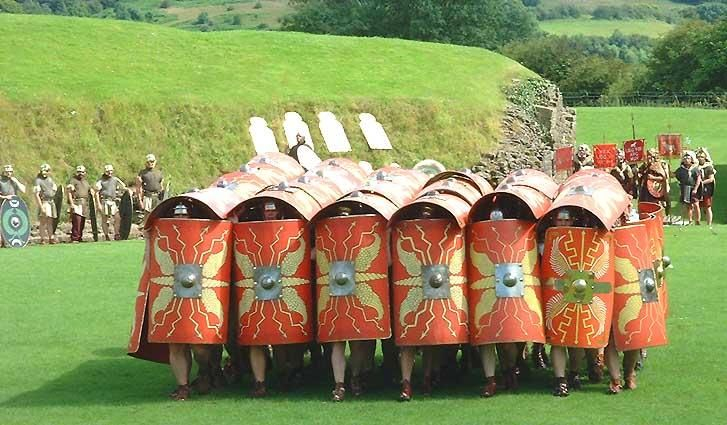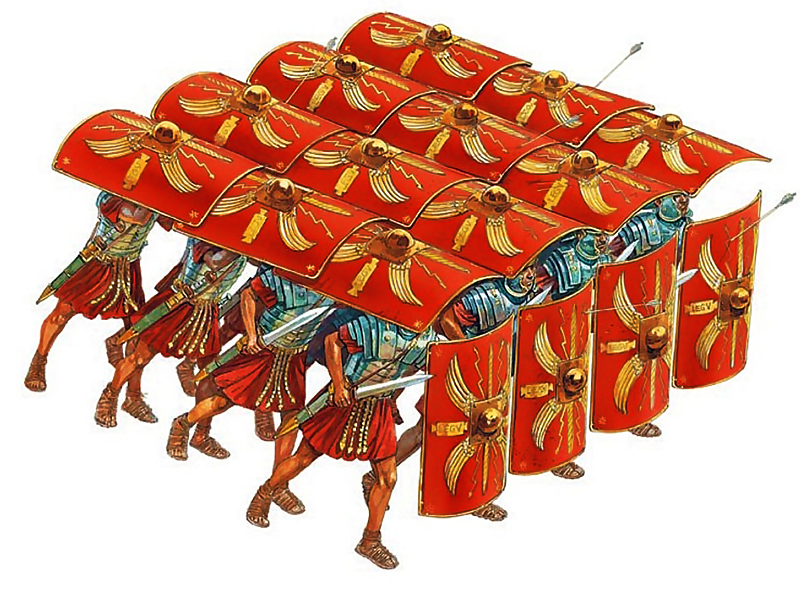The Testudo
The testudo, which means "tortoise" in Latin, was a Roman shield-wall construction. It was a frontline approach that the legionaries frequently employed during battle. It was a defensive system that permitted Roman foot soldiers to defend themselves against missile attacks and opposing bowmen.
The testudo configuration was not normal, but it was utilized in unique circumstances to manage certain combat hazards. The layout was intricate and difficult to create, requiring the soldiers' skill and synchronicity.
Romans were able to surround opponents with a wall of wood thanks to their very huge scuta shields. The formation's front rank would crouch behind its over one-meter-tall shields that were connected. Shields would be held above the heads of the men in front by the second rank, and so on. Men on the flanks and in the back could likewise present and lock their roughly meter-wide shields together, their sharply curved fronts making an excellent missile barrier, if the all-around defense was required.
Some testudo descriptions distinguish between "heavily-armed" infantry with curved scuta and lighter troops with flat shields, who provide the tortoise's roof.
While a testudo could be marched around, it moved at a tortoise-like pace, and the formation was primarily utilized in response to distant missile fire. It was used in sieges to provide troops and engineers with safe access to the walls they were attempting to destroy before more permanent defensive constructions could be constructed.
In 36 BC, Marc Antony (of later Shakespearean fame) allegedly used the approach against the Parthians, who had some success against the testudo with mounted archers.











